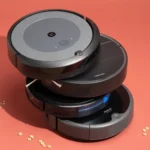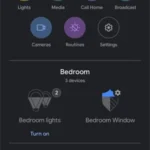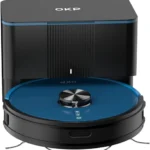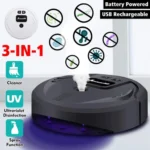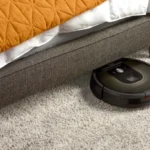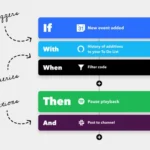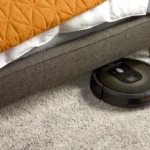Have you ever wished for a smart home integration that controls your vacuum cleaner effortlessly? Well, with advancements in technology, several options are available. One popular integration is IFTTT, which stands for ‘If This, Then That.’ However, is it really the best option out there? In this article, we will explore the pros and cons of IFTTT and compare it with several other popular smart home integrations for smart vacuum cleaners, including Google Assistant, Amazon Alexa, Apple HomeKit, and SmartThings. In the end, you will have a better understanding of which integration might suit your needs the best. Let’s dive deeper into the world of smart home integrations!
IFTTT: Pros and Cons
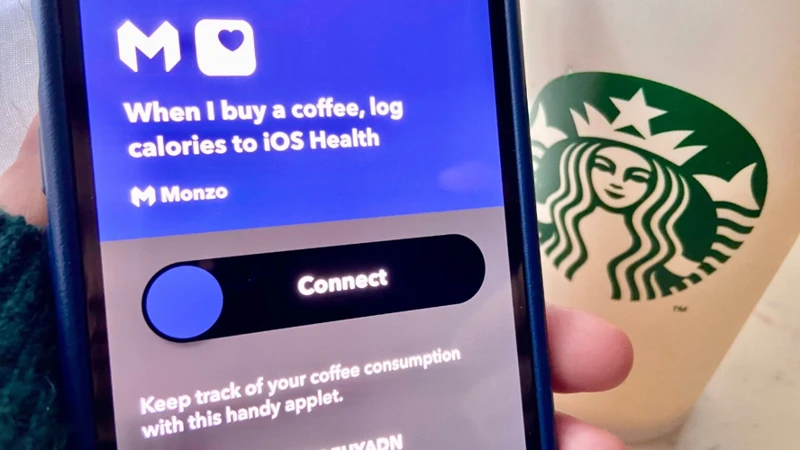
When it comes to controlling your smart vacuum cleaner, IFTTT (If This Then That) is a popular option among smart home enthusiasts. This web-based service allows you to create custom applets to connect your smart home devices and automate tasks. However, like any technology, IFTTT has its pros and cons. In this section, we’ll take a closer look at the benefits and drawbacks of using IFTTT with your smart vacuum cleaner. Before diving into that, if you’d like to know how to integrate IFTTT with your smart vacuum cleaner, check out our article on integrating IFTTT with your smart vacuum cleaner.
Pros
One of the key advantages of using IFTTT as a smart home integration for your vacuum cleaner is the ability to create custom applets, which allow you to automate specific tasks and streamline your cleaning routine. Some of the noteworthy pros of IFTTT for smart vacuum cleaners are tabulated below:
| Pros of IFTTT | Description |
|---|---|
| Custom Integrations | IFTTT allows you to create custom applets that connect your vacuum cleaner to other smart home devices and services, such as your lights, thermostat, or voice assistant. |
| Easy to Use | The IFTTT platform is user-friendly and easy to set up, even for those not tech-savvy. |
| Compatibility | IFTTT integrates with a wide range of smart vacuum cleaners, including brands such as Roomba, Neato, and Shark. |
| Automation | With IFTTT, you can automate repetitive cleaning tasks, such as starting the vacuum when you leave the house or stopping it when the battery is low. |
| Versatility | IFTTT offers numerous pre-built applets that can be used with your vacuum cleaner without having to create custom ones. |
IFTTT helps in simplifying your daily tasks and streamlining your smart home ecosystem through its applets feature, which can be customized based on your preferences. If you’re looking to explore some useful IFTTT applets for your vacuum cleaner, check out our article on 5 Useful IFTTT Applets for Your Vacuum Cleaner.
Cons
While IFTTT has numerous benefits for smart vacuum cleaners, it also has its drawbacks. Here are some of the cons of using IFTTT for smart home integration with your vacuum cleaner:
1. Limited Device Compatibility: Not all smart vacuum cleaners work with IFTTT. You need to ensure that your vacuum cleaner is compatible with IFTTT before using it for smart home integration.
2. Latency Issues: There is often a delay when using IFTTT to trigger actions with your smart vacuum cleaner. This delay can range from a few seconds to several minutes, depending on the complexity of the applet.
3. Reliance on Cloud Services: IFTTT is a cloud-based service, which means you must have a reliable internet connection to use it effectively. If your internet connection goes down, you won’t be able to control your smart vacuum cleaner using IFTTT.
4. Limited Functionality: While IFTTT is great for automating simple tasks, it may not be enough to control all aspects of your smart vacuum cleaner. For example, you may not be able to control the suction power or set cleaning schedules using IFTTT.
5. Security and Privacy Concerns: Since IFTTT requires access to your personal data and device information, there is always a risk of data breaches and privacy concerns. You should always review the privacy policy before using IFTTT for smart home integration.
Considering these cons, it is important to carefully weigh the pros and cons of IFTTT before deciding to use it for smart vacuum cleaners. It is always a good idea to research extensively and compare it with other smart home integrations to see which one suits your requirements best. To learn more about the pros and cons of IFTTT for smart vacuum cleaners, check out this detailed article. If you have already decided to use IFTTT, you can learn how to create applets for your smart vacuum cleaner in this step-by-step guide: Create IFTTT Applets for Smart Vacuum Cleaner.
Other Smart Home Integrations: Benefits and Limitations
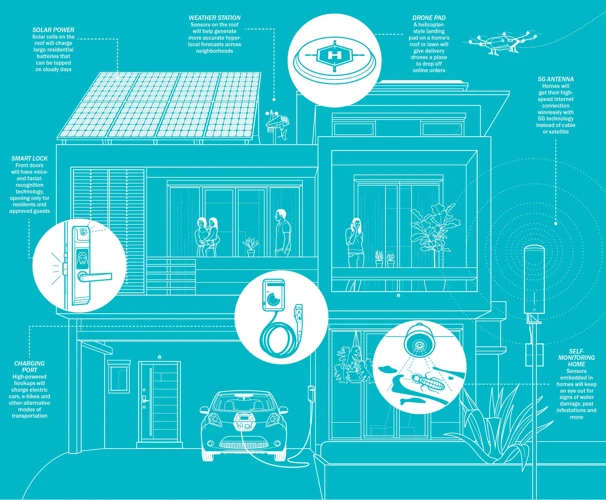
While IFTTT is a popular smart home integration option for controlling your smart vacuum cleaner, it certainly isn’t the only one. In fact, there are several other smart home integrations with their own unique benefits and limitations. Let’s explore some of these integrations, including Google Assistant, Amazon Alexa, Apple HomeKit, and SmartThings. Each of these integrations has its own set of features that may appeal to different users, depending on their needs and preferences. So, let’s take a closer look at what each of these integrations has to offer.
Google Assistant
Google Assistant is a popular smart home integration that can work seamlessly with smart vacuum cleaners. Here are a few benefits and limitations to consider:
Benefits:
- Easy setup: Google Assistant is easy to set up and use. You can start controlling your vacuum cleaner with voice commands in just a few minutes.
- Voice commands: With Google Assistant, you can control your smart vacuum cleaner with simple voice commands. This allows you to easily start and stop cleaning sessions, as well as schedule cleaning times.
- Multiple device compatibility: Google Assistant works with a wide range of devices, including smartphones, smart speakers, and smart displays. This means you can control your vacuum cleaner from wherever you are.
- Integration with other services: Google Assistant can also integrate with other smart home services, such as Nest and Philips Hue. This allows you to create custom routines that include your vacuum cleaner.
Limitations:
- Internet connectivity: Like all smart home integrations, Google Assistant requires an internet connection to function properly. If your internet goes down, you may not be able to control your vacuum cleaner with voice commands.
- Compatibility issues: Not all vacuum cleaners are compatible with Google Assistant. Be sure to check if your vacuum cleaner is compatible before purchasing.
- Security concerns: Like all smart home devices, there is always a risk of security breaches with Google Assistant. Make sure you take the necessary steps to secure your devices and information.
When considering using Google Assistant as a smart home integration for your vacuum cleaner, there are a few factors to keep in mind. Firstly, you need to ensure that your vacuum cleaner is compatible with Google Assistant. Additionally, you may also want to consider other compatible devices and services that you can integrate with Google Assistant to make the most out of your smart home setup. Finally, it’s also important to prioritize privacy and security to ensure that your home is protected.
Amazon Alexa
When it comes to smart home integrations for smart vacuum cleaners, Amazon Alexa is one of the most popular choices for users. Here are some of the benefits and limitations of using Alexa with your vacuum:
- Benefits
- Hands-free control: Alexa allows you to control your vacuum cleaner with your voice, making it a great option for those who want a truly hands-free cleaning experience.
- Compatibility: Many popular smart vacuum cleaners, such as the iRobot Roomba and the ECOVACS DEEBOT, are compatible with Alexa, allowing you to easily integrate your vacuum into your smart home setup.
- Routines: You can create routines with Alexa that allow you to automate your cleaning schedule. For example, you can set up a routine that triggers your vacuum to start cleaning every day at a certain time.
- Third-party integrations: Alexa integrates with a variety of third-party services, such as IFTTT and SmartThings, which can further enhance your smart home experience.
- Limitations
- Limited control options: While voice control is convenient, it may not be suitable for all situations. For example, if you want to adjust the cleaning settings of your vacuum, you may need to use the app or physical controls.
- Privacy concerns: As with any smart home integration, there are potential privacy concerns with Alexa. Some users may be uncomfortable with the idea of an always-listening device in their home.
Amazon Alexa is a great option for those who want a convenient and hands-free way to control their smart vacuum cleaner. However, it’s important to consider the potential limitations before making a decision.
Apple HomeKit
When it comes to smart home integration for your vacuum cleaner, it’s important to consider Apple HomeKit. Here are some of the benefits and limitations of using this platform:
Benefits:
- Easy to Use: If you already have an Apple device, using HomeKit is a no-brainer. It’s easy to set up and navigate, and it integrates seamlessly with other Apple products.
- Secure: Apple is known for its commitment to security and privacy. HomeKit uses end-to-end encryption to keep your data safe.
- Voice Control: With HomeKit, you can control your vacuum cleaner using Siri. Simply tell Siri to start or stop the cleaning process, or to adjust the settings. This is especially convenient if you have your hands full.
- Automations: HomeKit allows you to create automations, which means you can set up your vacuum cleaner to start cleaning at a certain time or when you leave the house. This takes the hassle out of cleaning and ensures that your floors are always tidy.
Limitations:
- Compatibility: Apple HomeKit is only compatible with a limited number of smart vacuum cleaners. If your vacuum cleaner doesn’t support HomeKit, you won’t be able to use this platform.
- Cost: Apple products tend to be more expensive than their competitors, and HomeKit is no exception. You’ll need to invest in an Apple device if you don’t already have one, which can be a barrier for some users.
- Availability: While HomeKit is widely available in many countries, it may not be available in your region. This is something to consider if you’re thinking about using this platform.
Apple HomeKit is a great option for those who already have Apple devices and want to integrate their vacuum cleaner into their smart home ecosystem. While there are some limitations to consider, the benefits of using HomeKit make it a worthwhile investment for many users.
SmartThings
When it comes to smart home integrations for your vacuum cleaner, SmartThings is another popular choice. This platform allows you to connect various smart devices and create automations to streamline your home’s operations.
Benefits:
One of the biggest advantages of SmartThings is its versatility. You can connect a wide range of devices to the platform, including smart vacuums from a variety of popular brands. This means that if you already have one or more smart home devices at home, chances are they are compatible with SmartThings.
Another highlight of SmartThings is its flexibility. You can create custom routines that allow your vacuum cleaner to work in harmony with other devices. For example, you can create a routine that turns on your smart lights and starts your vacuum cleaning when you leave the house.
If you’re someone who likes to have detailed control over their devices, you’ll appreciate SmartThings’ advanced settings. You can fine-tune your automations by adjusting settings like sensor sensitivity, timeout periods, and more.
Limitations:
While SmartThings is a versatile platform, it can be somewhat complex to navigate. The setup process can be time-consuming, and some users have reported difficulties in getting their devices to connect properly. Additionally, the platform does require some level of technical know-how to use effectively.
Another potential downside to SmartThings is its privacy and security. As with other smart home integrations, there is a risk of hackers gaining access to your devices and personal information. However, SmartThings does have several security measures in place to mitigate this risk, such as two-factor authentication and regular security updates.
SmartThings is a highly customizable smart home integration that offers a lot of potential for those willing to put in the time and effort to set it up properly. If you’re looking for a platform that offers detailed control over your smart vacuum and other devices, SmartThings is certainly worth considering.
| Pros | Cons |
|---|---|
| Versatile platform, supports a wide range of devices | Can be complex and time-consuming to set up |
| Flexible automation options allow for advanced routines | May require technical know-how to use effectively |
| Advanced settings for fine-tuning automations | Potential privacy and security risks |
Factors to Consider When Choosing a Smart Home Integration
When it comes to choosing a smart home integration for your smart vacuum cleaner, there are several important factors to take into consideration. With so many options available in the market today, it can be overwhelming to know which one to choose. You want to make sure the integration is compatible with your vacuum cleaner, as well as any other smart devices you have in your home. Additionally, privacy and security should be taken into account. In this section, we will explore these factors in more detail to help you make an informed decision.
Compatibility with Your Vacuum Cleaner
When it comes to choosing a smart home integration for your vacuum cleaner, one of the main factors to consider is compatibility. Not all smart home devices work with all vacuums, which means you need to do your research before making a purchase.
Below is a table outlining some popular vacuum cleaners and the smart home integrations they work with:
| Vacuum Cleaner | IFTTT | Google Assistant | Amazon Alexa | Apple HomeKit | SmartThings |
|---|---|---|---|---|---|
| iRobot Roomba | Yes | Yes | Yes | No | Yes |
| Ecovacs Deebot | No | Yes | Yes | No | Yes |
| Shark Ion | No | Yes | Yes | No | Yes |
| Neato Botvac | Yes | Yes | Yes | Yes | Yes |
| LG Hom-Bot | Yes | Yes | Yes | No | Yes |
As you can see, not all vacuum cleaners work with all smart home integrations. If you already have a smart home device in your home, such as an Amazon Alexa or Google Assistant, it’s important to ensure that the vacuum cleaner you choose is compatible. Similarly, if you already own a vacuum cleaner and want to add smart home capabilities, you need to ensure that the smart home device you choose will work with your vacuum cleaner.
It’s also important to note that some smart home integrations may require additional accessories or hubs to work with certain vacuum cleaners. For example, if you have an iRobot Roomba and want to integrate it with Apple HomeKit, you will need to purchase the iRobot Home Base with Wi-Fi, which allows the Roomba to connect to your home’s Wi-Fi network.
Compatibility is a key factor to consider when choosing a smart home integration for your vacuum cleaner. By doing your research and ensuring that your devices will work together, you can create a seamless and convenient smart home setup.
Other Compatible Devices and Services
When considering smart home integrations for your smart vacuum cleaner, it’s important to take into account their compatibility with other devices or services that you already have or plan to get in the future. This integration can save you time and effort by allowing you to control multiple devices with a single app or voice command.
Here are some compatible devices and services to consider:
- Smart thermostats: Integrating your smart vacuum cleaner with a smart thermostat can be beneficial in terms of cost and convenience. For example, if your Nest thermostat detects that you’re away from home, it can notify your vacuum cleaner to start cleaning up any messes.
- Smart locks: With smart locks, you can sync your vacuum cleaner with your front door, so the vacuum cleaner won’t start working until the house is empty. Similarly, when you arrive home, the vacuum cleaner can return to its dock until the house is empty again.
- Smart cameras: By integrating your smart vacuum cleaner with your security cameras, you can set up motion detection zones that will trigger the vacuum – for example, when someone walks by.
- Smart lights: Controlling your smart vacuum cleaner with smart lights can be helpful for those who live in a multi-level home. If you have multiple floors, you can use smart lights to signal which floor needs cleaning.
- Music streaming services: If you enjoy listening to music while cleaning, integrating your vacuum cleaner with services like Spotify or Pandora can help you save time by not having to switch back and forth between apps.
Remember to check if your desired smart home integration is compatible with your vacuum cleaner. Some smart home devices may only be compatible with specific models or brands, so it’s important to do your research beforehand.
Privacy and Security
When it comes to integrating smart home devices, privacy and security should always be at the forefront of your mind. Here’s a breakdown of how each integration stacks up:
| Privacy | Security | |
|---|---|---|
| IFTTT | Third-party services may have access to your data | Security measures are in place, but you’re ultimately at the mercy of third-party services |
| Google Assistant | Uses your data to improve targeted advertising | Robust security measures in place, and you can use two-factor authentication for added protection |
| Amazon Alexa | Collects and stores voice recordings | Similar security measures as Google Assistant, and you can delete your voice recordings |
| Apple HomeKit | Does not collect user data | End-to-end encryption for all communications, and secure pairing process for devices |
| SmartThings | Collects data to improve user experience | Uses industry-standard security protocols, and you can enable two-factor authentication |
As you can see, each integration has its strengths and weaknesses when it comes to privacy and security. Ultimately, it’s up to you to decide what level of risk you’re comfortable with. However, it’s always a good idea to read up on the privacy policies and security measures of any smart home integration you’re considering.
Conclusion
After comparing and contrasting IFTTT with other smart home integrations, it’s clear that each option has its advantages and disadvantages.
IFTTT provides a versatile platform that allows you to connect a wide range of devices and services, including smart vacuum cleaners. Its strength lies in its ability to automate tasks and create custom applets with a simple and intuitive interface. However, it does have limitations, such as limited functionality and the need to rely on third-party services to connect with some devices.
Google Assistant is a powerful voice assistant that integrates seamlessly with Google Home and other smart devices. Its compatibility with a wide range of devices and natural language processing capabilities make it an excellent choice for controlling your smart home, including your smart vacuum cleaner. However, it does require you to have an internet connection and may face some privacy concerns.
Amazon Alexa also boasts a broad range of compatibility with devices and services, making it another popular choice for smart home integration. Alexa allows you to control your smart home with voice commands, and with the added benefit of customized skills, it’s an excellent choice for your smart vacuum cleaner. However, like Google Assistant, privacy concerns and the need for an internet connection may pose some challenges.
Apple HomeKit is an excellent option for those who prefer an ecosystem that works exclusively with iOS devices. Its security and privacy features are top-notch, and its compatibility with a wide range of devices continues to expand. However, the setup process can be more complicated than some other smart home integrations.
SmartThings is an integration that’s geared towards Samsung products, but it does connect with other devices such as smart vacuum cleaners. Its user-friendly app and affordable pricing make it an attractive choice, but its compatibility is limited when compared to other integrations.
When choosing a smart home integration, consider the compatibility with your vacuum cleaner, the range of compatible devices and services, and privacy and security concerns.
In conclusion, IFTTT and other smart home integrations open doors to a more streamlined and smart home experience. With their unique strengths and limitations, it’s up to you to determine which option will work best for your needs. Regardless of your choice, your smart vacuum cleaner can now be a part of your seamless and integrated smart home.
Frequently Asked Questions
1. What is IFTTT, and how does it work?
IFTTT stands for “If This, Then That.” IFTTT enables you to create applets that connect your smart vacuum cleaner to other smart devices.
2. Can IFTTT work with any smart vacuum cleaner?
IFTTT can work with several smart vacuum cleaners, but you should check the manufacturer’s website or app to confirm compatibility.
3. What are the advantages of using IFTTT for my smart vacuum cleaner?
IFTTT enables you to set up complex automation, connect multiple smart devices, and tailor integrations based on your preferences.
4. Are there any downsides to using IFTTT?
One potential downside is that IFTTT relies on internet connectivity, so if your internet connection goes down, your automations may not work. Additionally, some applets can have a delay that may not be preferable for certain use cases.
5. How does Google Assistant integrate with smart vacuum cleaners?
Google Assistant can be used to control your smart vacuum cleaner with voice commands or through the Google Home app.
6. Is Amazon Alexa compatible with all smart vacuum cleaners?
Alexa can work with several different smart vacuum cleaners, but some models may not be compatible. Be sure to check the manufacturer’s website or app for more information.
7. Can Apple HomeKit control my smart vacuum cleaner?
Apple HomeKit can be used to control some smart vacuum cleaners, but not all models are compatible.
8. What is SmartThings, and how does it work with smart vacuum cleaners?
SmartThings is a smart home automation platform. It works with several different smart vacuum cleaners and provides a range of automation options based on your preferences.
9. How do I choose the right smart home integration for my vacuum cleaner?
Consider compatibility with your vacuum cleaner and other smart devices, the level of automation and customization you desire, and privacy and security features.
10. Are there any privacy concerns when using smart home integrations with my vacuum cleaner?
Some smart home integrations may collect data on your usage patterns, so it’s important to read privacy policies carefully and make sure you are comfortable with the level of data collection.

